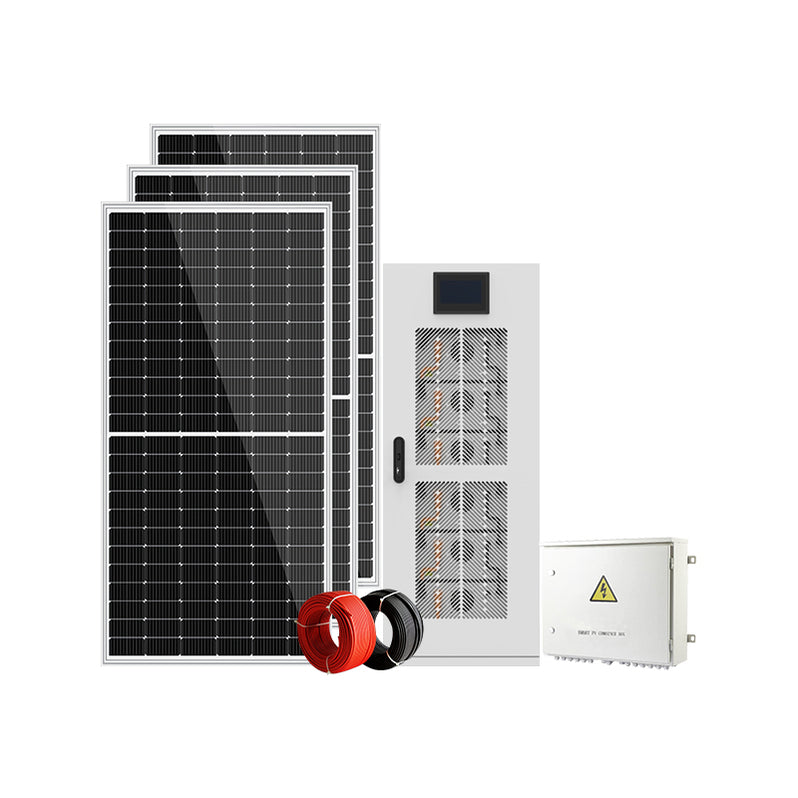Unlocking the Power of Off-Grid Solar: Discover the Secrets to Energy Independence!
In a world increasingly focused on sustainability and energy independence, off-grid solar power systems have emerged as a viable solution for those looking to break free from conventional energy sources. These systems allow individuals and communities to generate and manage their own electricity, providing a sense of autonomy and resilience. Whether you live in a remote area, seek to reduce your carbon footprint, or simply want to save on utility bills, understanding off-grid solar power systems is essential. In this article, we will delve into what off-grid solar power systems are, how they function, and the various benefits and drawbacks associated with them.

Understanding Off-Grid Solar Power Systems
Off-grid solar power systems are self-sufficient energy solutions designed to operate independently of the traditional electricity grid. Unlike grid-tied systems, which rely on external power sources and are connected to utility lines, off-grid systems generate power solely from renewable sources, primarily solar energy. These systems are especially beneficial in areas where extending the grid is impractical or too expensive, such as rural locations or during natural disasters that disrupt power supply. At the core of an off-grid solar setup are solar panels that capture sunlight and convert it into electricity. This electricity is then stored in batteries for use during cloudy days or at night, ensuring a continuous power supply. The technology behind these systems has evolved significantly, making them more efficient and accessible than ever before. Friends who have transitioned to off-grid systems have shared experiences of empowerment and satisfaction, knowing they can rely on their own energy production.
How Off-Grid Solar Power Systems Work
An off-grid solar power system consists of several key components that work in harmony to capture, store, and distribute energy. Firstly, solar panels are installed on rooftops or in open areas where they can receive maximum sunlight. These panels are made up of photovoltaic cells that convert sunlight into direct current (DC) electricity. The DC electricity is then directed to a charge controller, which regulates the flow of energy to the batteries, preventing overcharging and ensuring their longevity. The batteries serve as storage units, allowing users to harness energy for use when sunlight is not available. When electricity is needed, an inverter converts the stored DC electricity into alternating current (AC), which is the form most household appliances require. This system allows for energy generation and storage in a seamless manner. My friend Sarah, who lives in a secluded cabin, often shares how her off-grid solar system has transformed her lifestyle, providing her with a reliable power source while embracing nature.
Benefits of Off-Grid Solar Power Systems
The advantages of off-grid solar power systems are compelling. One of the most significant benefits is energy independence, as users can generate their own electricity without relying on external sources. This independence not only offers a sense of security but also protects against rising utility costs. Additionally, off-grid systems are environmentally friendly, allowing users to significantly reduce their carbon footprint and contribute to a more sustainable future. These systems are also ideal for remote locations, providing essential power in areas where conventional electricity infrastructure is lacking. Furthermore, with advancements in technology, the initial investment in off-grid systems is becoming more manageable, and many users find that the long-term savings on energy bills outweigh the initial costs. My neighbor, who recently installed an off-grid system, has noticed a drop in his monthly energy expenses, allowing him to invest in other sustainable practices.
Drawbacks of Off-Grid Solar Power Systems
Despite their many benefits, off-grid solar power systems also come with potential drawbacks that users should consider. One of the primary concerns is the initial cost of installation, which can be significant depending on the system's size and the number of components required. While these costs can be offset over time through energy savings, it may be a barrier for some individuals looking to make the switch. Additionally, off-grid systems require ongoing maintenance to ensure optimal performance. Battery replacements and system checks can add to the overall expenses. Another limitation is the potential for reduced energy production during periods of inclement weather, such as cloudy days or heavy snowfall, which can affect the system's efficiency. It's important for potential users to assess their energy needs and local climate conditions before making a decision. A friend of mine who installed an off-grid system had to adjust his energy consumption during winter months when sunlight was scarce, highlighting the importance of planning and understanding energy usage.
Empowering Sustainable Energy Choices
Off-grid solar power systems represent a powerful opportunity for individuals seeking energy independence and sustainability. By understanding how these systems work and weighing their benefits against potential drawbacks, users can make informed decisions about their energy futures. With the right planning and investment, off-grid solar systems not only foster a self-sufficient lifestyle but also contribute to a cleaner environment. As more people explore sustainable energy solutions, the potential of off-grid solar power systems continues to grow, paving the way for a more independent and eco-friendly future.








